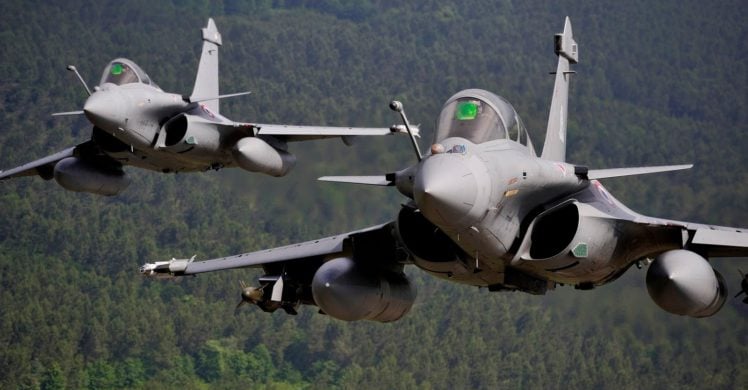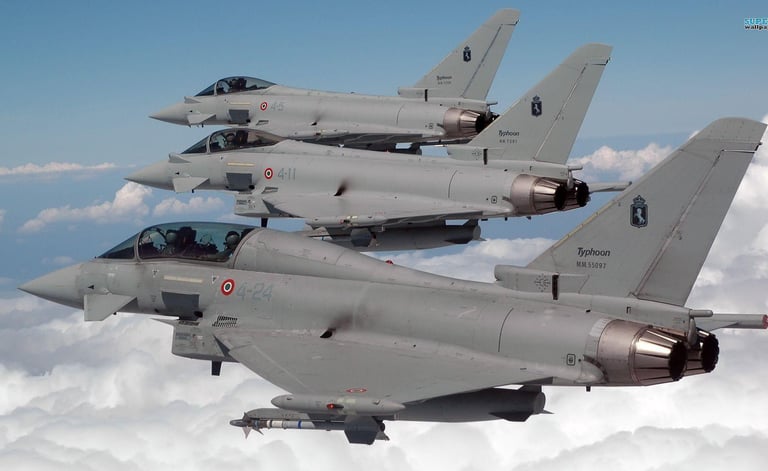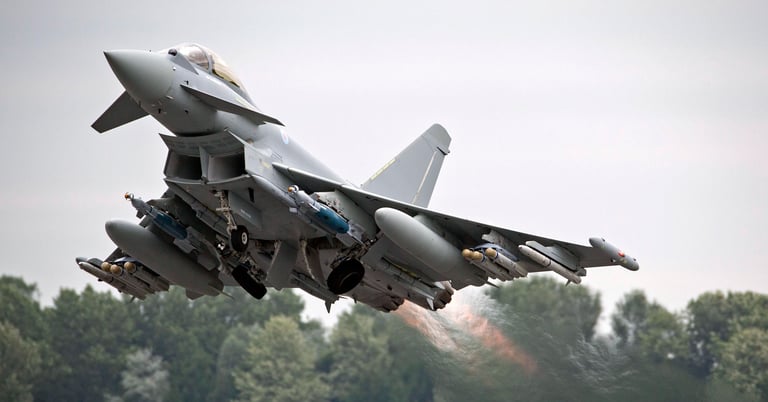History Of Eurocanards
Fact for 26/6/2021
FACTS
The world was impressed by the Fourth Generation Air Superiority fighters. Everyone watched the new advanced fighters from America, The F-15s and F-16s. Later came the Soviet Su-27 and MiG-29 which showed an another dimension of advanced combat planes. The European Nations realised they were not able to fund any fourth generation fighter program single handedly at national level. Extreme Agility, Powerful Radar, Electro Optic passive detection and targeting, Long Range operations, Heavy weapon carrying capability and Ability to perform multiple roles were key features


The Eurocanards have a very interesting history and expanses many political and economic matters. The collaborative program also involves many companies from many European partners except the “Big Four” customers of Eurocanards. An Air Superiority fighter with multirole abilities with precision strike being one of them was everyone's anticipation
Birth of Grippen and starting thinking about F 35


In 1977 the British sought to replace their Jaguar strike fighters and BAE Harrier jumpjets. Also stung by the infamous title of Widowmaker the West Germany wanted their F-104 starfighters to be replaced. In the same time many European air forces were looking for a high end combat aircraft with multirole capabilities. The British were more interested to have robust air to air capabilities to be of the level of an Air Superiority fighter, they also wanted an advanced aircraft to replace jumpjets. It came later to their mind that having such wide anticipations are too ambitious for a single fighter development program
So they finalised two main requirements namely "Air Staff Target (AST) 403" for air to air roles; and a short-takeoff Harrier replacement, designated the "AST 409". In the meanwhile the British also conducted a series of small-scale technology-demonstration programs to help develop useful subsystems for such a new aircraft.
The AST 409 requirement later fructified in the form of F-35B Joint Strike Fighter. The BAE considered many concepts for the AST 403 and later selected "P.106B", lightweight fighter. It was a single engine canarded delta wing design which looks quite similar to Saab JAS-39 Gripen. The design was rejected because RAF felt that it had "half the effectiveness of the two-engined aircraft at two-thirds of the cost".


Final Design of Eurofighter Typhoon
At around the same time West Germany came up with concepts for multirole fighter. The Messerschmitt-Boelkow-Blohm (MBB) in Germany was considering a number of different concepts for an air-superiority fighter under the Luftwaffe's "Taktisches Kampfflugzeur 1990 (TKF-90 / Tactical Combat Aircraft 1990)" requirement. It was also a canarded delta design. With two air intakes similar to what we later saw in Mikoyan Project 1.44. The TKF-90 was a very big inspiration for the EAP demonstrator which was later developed into Eurofighter Typhoon.
BAE and MBB then began to discuss a collaboration, resulting in 1979 in a proposed design for a "European Collaborative Fighter (ECF)", later the "European Combat Aircraft (ECA)". The ECA resembled the MBB TKF-90 design.(edited)
Born of Dassault Rafale
France joined ECF in October 1979 as Dassault began to make up it's mind, although they had their own work going on in the same direction and didn't mind telling others about it. It was at this stage of development the Eurofighter name was first attached to the aircraft. The French however wanted to lead the design and were more interested to make a strike fighter platform. The British and French wanted their respecive RB199 and Snecma M-88 to power the ECA.
The French attitude led to the collapse of intergovernmental talks on collaboration in 1980. The British government canceled AST 403 in 1981, while the West German government showed no interest in funding development of the TKF-90.


That might have been the end of the whole thing, but BAE management realized that European air forces would need a new fighter sooner or later, and pressed on. BAE had been working on an export fighter-bomber design, the "P.110", basically a follow-on from the P.106B concept with ECF influence, but couldn't find a buyer to fund production.
Final Result of the Research | Eurofighter Typhoon


After this collapse, In April 1982 the Panavia partners (MBB, BAe and Aeritalia) launched the Agile Combat Aircraft (ACA) programme.They decided to collaborate on another machine, the "Agile Combat Aircraft (ACA)", which was based on TKF-90 and P.110 concepts. The Italians were very interested in the ACA since they had an urgent need for a replacement for their F-104 Starfighters
A mockup of the ACA was displayed at the Farnborough Air Show in the UK in 1982 and at the Paris Air Show in 1983. As response the French started working aggressively on "Avion de Combate Experimentale (ACX)" program, which later became Dassault Rafale although prior to France's joining of the ECA, Dassault received contracts for the development of project ACT 92 Avion de Combat Tactique, meaning "Tactical Combat Airplane".
Later on ACA went ahead for the moment, with plans generated for the production of two demonstrators under the "Experimental Aircraft Programme (EAP)" -- if building a new fighter seemed to be taking time, production of acronyms was at full steam. On 26 May 1983, the British Ministry of Defense awarded BAE and Aeritalia, the Italian partner, a contract for one of the EAPs, and the expectation was that the Germans would quickly commit to construction of the second demonstrator.
Eventually this 2nd demonstrators went and made into eurofighter typhoon
info gathered by - Exeter from Defence Matrix Discord
